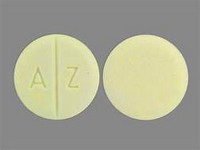Azathioprine
CLINICAL USE
Immunosuppressive:
DOSE IN NORMAL RENAL FUNCTION
1–5 mg/kg/day
PHARMACOKINETICS
DOSE IN RENAL IMPAIRMENT
GFR (mL/MIN)
DOSE IN PATIENTS UNDERGOING RENAL REPLACEMENT THERAPIES
IMPORTANT DRUG INTERACTIONS
Potentially hazardous interactions with other drugs
ADMINISTRATION
Reconstition
Add 5 mL water for injection to each vial (50 mg)
Route
Oral, IV
Rate of Administration
Over not less than 1 minute
Comments
OTHER INFORMATION
Extensively metabolised to mercaptopurine
